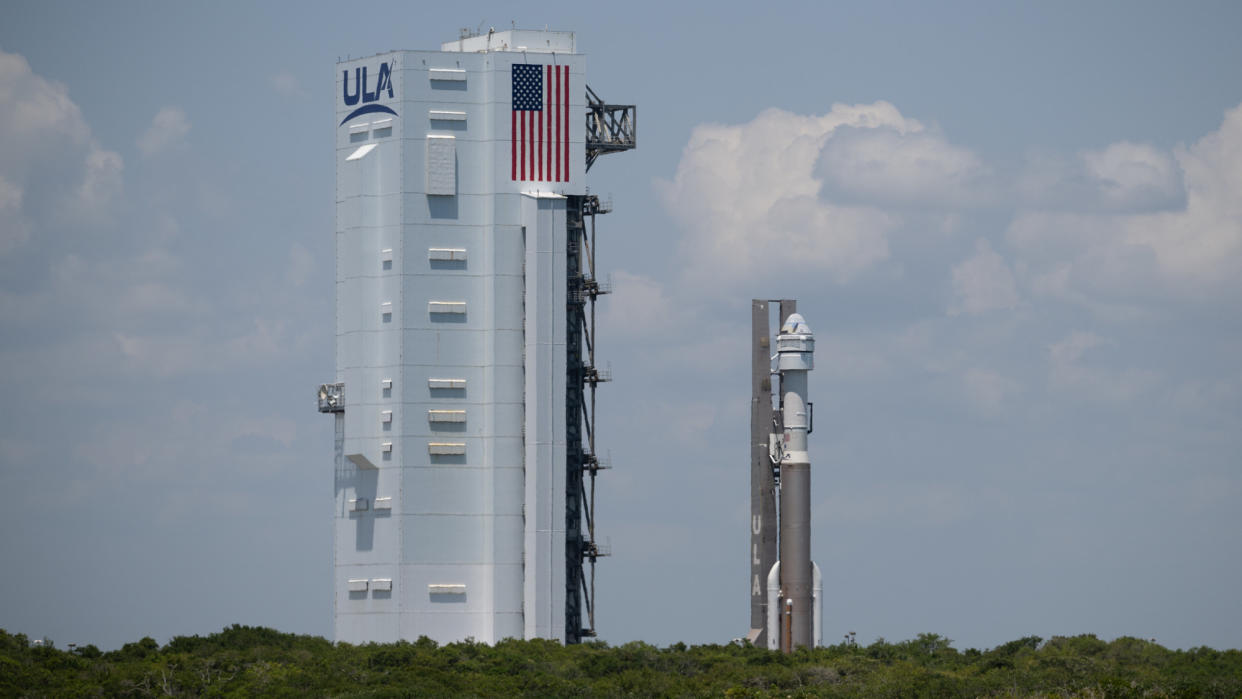Helium leak delays Boeing's 1st Starliner astronaut launch to May 21

The crewed debut of Boeing's Starliner capsule has been pushed back an additional four days.
Starliner had been scheduled to lift off this Friday (May 17) on Crew Flight Test (CFT), a mission that will send NASA astronauts Suni Williams and Butch Wilmore to the International Space Station (ISS) for a roughly eight-day stay.
But that's no longer the plan. Teams detected a small helium leak in Starliner's service module and have pushed the target date back to May 21, Boeing announced in an update today (May 14).
Starliner will launch atop a United Launch Alliance (ULA) Atlas V rocket from Cape Canaveral Space Force Station, on Florida's Space Coast. The May 21 launch is scheduled for 4:43 p.m. EDT (2043 GMT); you can watch it live here at Space.com when the time comes.
Related: Boeing Starliner 1st astronaut flight: Live updates
Today's news is the latest in a string of recent CFT delay announcements. The mission was originally supposed to lift off on May 6, but the team called that attempt off about two hours before launch after noticing a "buzzing" valve in the Atlas V's Centaur upper stage.
Boeing, NASA and ULA initially pushed the launch target back to May 10, then delayed it to May 17 after determining that the troublesome valve needed to be replaced, an operation that required rolling the Atlas V off the pad to an assembly facility at Cape Canaveral.
The troublesome valve was replaced and is behaving normally, Boeing representatives said in today's update.
The newfound helium leak, they added, has been traced to a "flange on a single reaction control system thruster" in Starliner's service module. These thrusters don't burn helium, but the gas allows them to fire properly.
"NASA and Boeing are developing spacecraft testing and operational solutions to address the issue," Boeing wrote in the update. "As a part of the testing, Boeing will bring the propulsion system up to flight pressurization just as it does prior to launch, and then allow the helium system to vent naturally to validate existing data and strengthen flight rationale."
RELATED STORIES:
— Boeing Starliner astronauts conduct dress rehearsal ahead of launch (photos, video)
— Boeing's Starliner spacecraft will not fly private missions yet, officials say
CFT will be the third flight for Starliner, after two uncrewed launches to the ISS. The capsule suffered several problems on its first mission, which lifted off in December 2019, and failed to meet up with the orbiting lab as planned. But Starliner succeeded on its second try, which launched in May 2022.
CFT is a crewed shakeout cruise for the capsule; if all goes well on the upcoming mission, Starliner will be certified to fly NASA astronauts on long-duration missions to and from the ISS. Boeing holds a $4.2 billion contract with the space agency to do just that, which was signed in 2014.
SpaceX got a similar deal at the same time, worth $2.6 billion. Elon Musk's company flew its equivalent of CFT in 2020 and is in the middle of its eighth operational, long-duration astronaut mission to the ISS for NASA.

